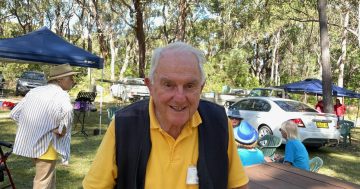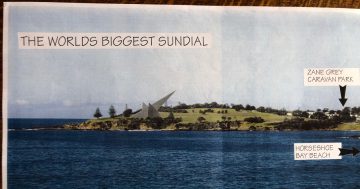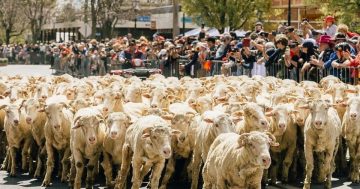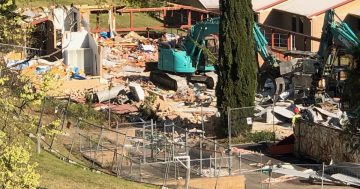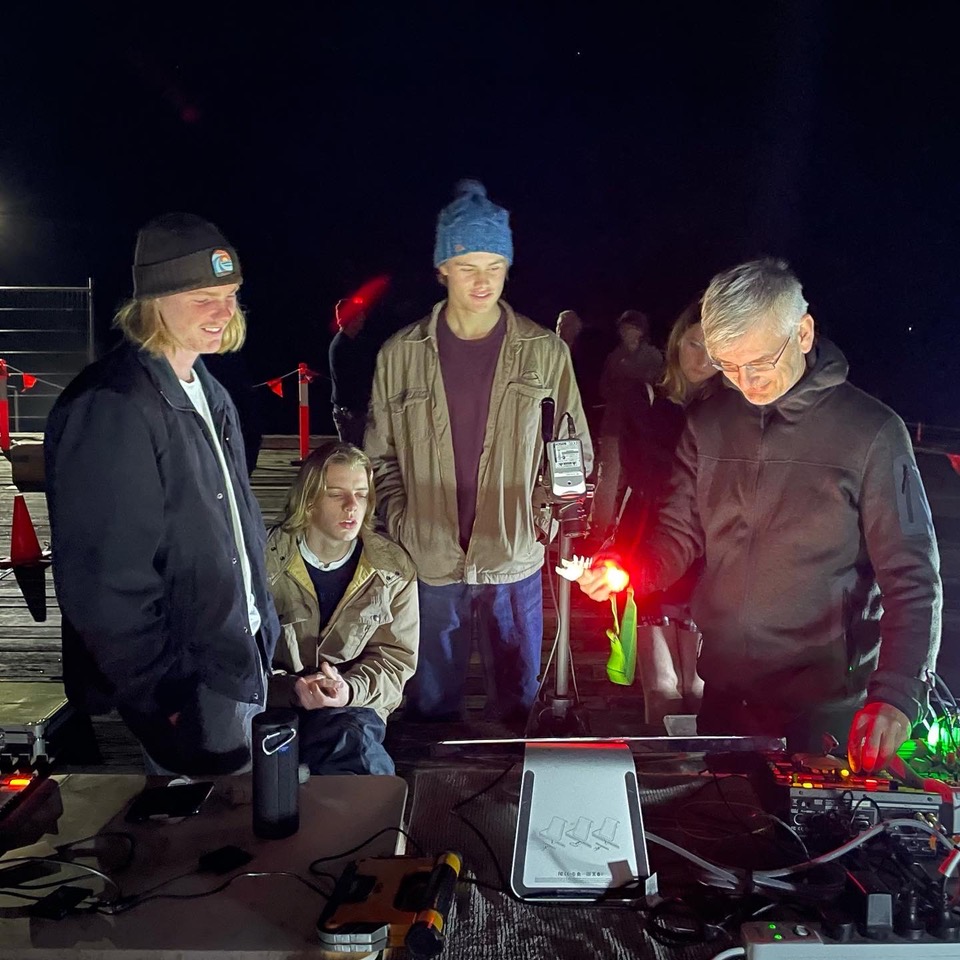
Bioluminescence will be held at Montreal Goldfield near Bermagui later this month, which is the follow-up to a similar event held in Tathra earlier this year (pictured). Photo: Lisa Herbert.
Nature lovers and art enthusiasts will converge at the historic goldfields near Bermagui this month for a ‘bioblitz’ as well as a Vivid-style event called Bioluminescence.
The goal of a bioblitz, which is a short survey of biodiversity in an area, is to get the public interested in the environment around them and to encourage public participation – community members are invited to join experts in its activities.
Those who head along even have a chance to discover a previously unknown species – which happened in a previous event on the Far South Coast.
Taking place over the weekend of 17 and 18 September, the Montreal Goldfield BioBlitz includes bird surveys, frog forages, mammal spotlighting, reptile searches, moth and insect collection, as well as plant surveys.
“Our last Bermagui Bioblitz was a great success and greatly enjoyed by the 240 people who attended,” the Atlas of Life’s Libby Hepburn said.
“Since then we have run another seven bioblitzes in our region and helped people in other places such as the Barrier Reef, Black Mountain in Canberra and Sydney Olympic Park.
“Through our bioblitzes at Bermagui, Panboola, Wallagoot, Mimosa Rocks, the Atlas has recorded 1008 species, and one previously unknown to science, at Four Winds, Barragga Bay.”
The bioblitz is not all that’s on at the site this month. At 7 pm on 17 September, the goldfields will be lit up with video projections and lights to create Bermagui’s own Vivid-style event.
Bioluminescence @ Montreal Goldfield is a light show designed and built by a team of local high school students under the direction of Bermagui video projection artist Scott Baker.
It will be the second science-based video projection event after the successful Bioluminescence @ Tathra Wharf earlier this year.
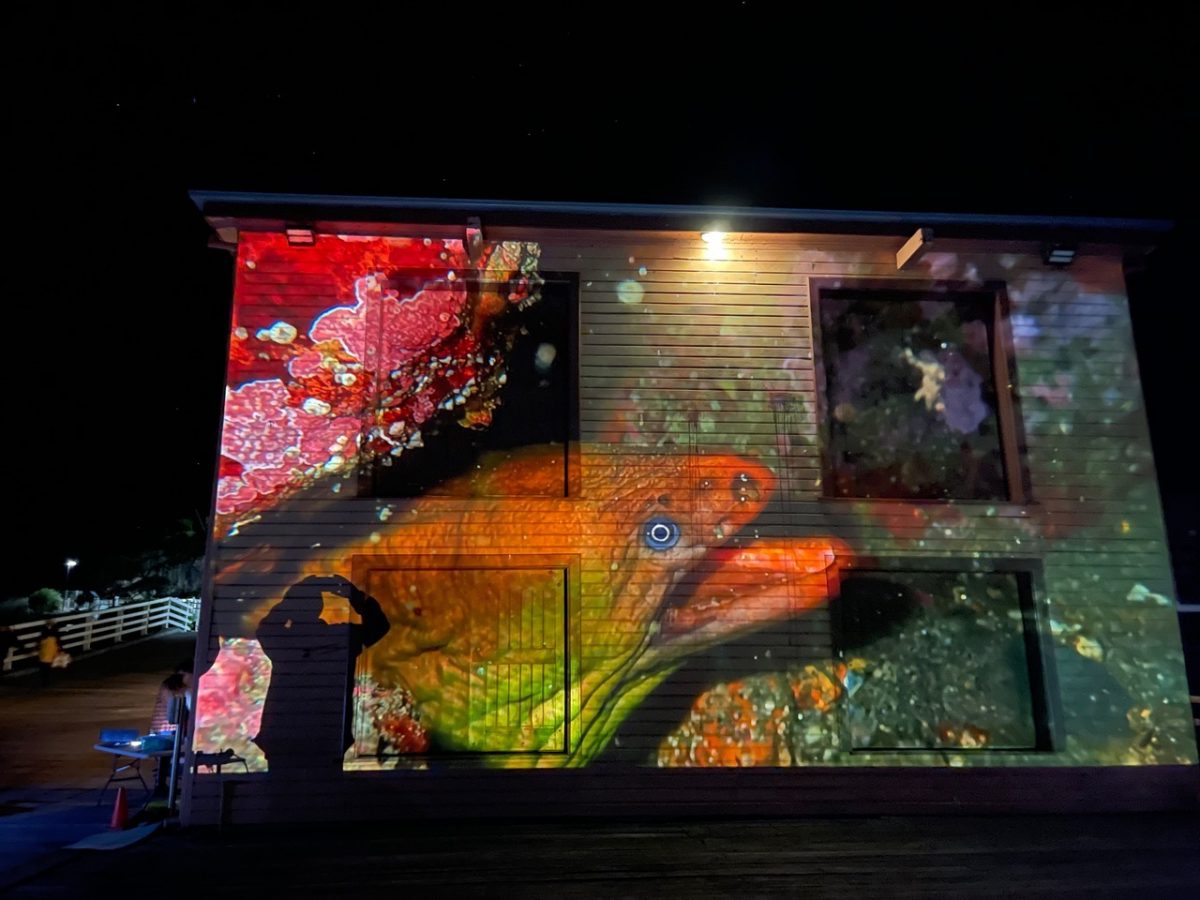
Projections on Tathra Wharf of images captured by Life Under the Wharf, a dive Tathra group headed up by Minka Waratah and Luke Hamilton. Photo: Atlas of Life.
“In May a pilot of the Bioluminescence project was presented to see how it would work and be received,” Mr Baker said. “It was an extremely popular success on all fronts.”
The Bioluminescence program is designed to introduce the video projection mapping process and a variety of associated skills such as videography, video editing and event management to young people in the Bega Valley.
“The students learn to capture the natural world around them and present it back on local landmarks using the latest video projection technology,” Mr Baker said.
“Come and see what natural treasures the students capture on film at the goldfield and use to turn the site into a glowing fairy land!”
The Montreal Goldfield is the only goldfield in Australia that stretches into the ocean.
Gold was discovered in the region in 1880 and about 2000 miners joined the rush at the site within three weeks.
While the rush only lasted about three years, miners found 250 kg of gold.
The area’s vegetation was devastated due to the digging with picks and shovels, but the seed bank was buried and left alone for 130 years.
The area has since healed, with a healthy community of native plants being re-established.
Bloodwood, bangalay and silvertop ash form a canopy over a diverse range of smaller trees, shrubs, herbs, ferns, climbers and grasses, while tree ferns grow from the shady and moist habitat of the old shafts.
Birds call through the lakeside bushland night and day, pollinators rest on abundant flowering plants and tree creatures watch from their high perches.
For more information and to book the events in the bioblitz, visit the Atlas of Life’s website.
Bioluminescence is free, but to register visit its website.








